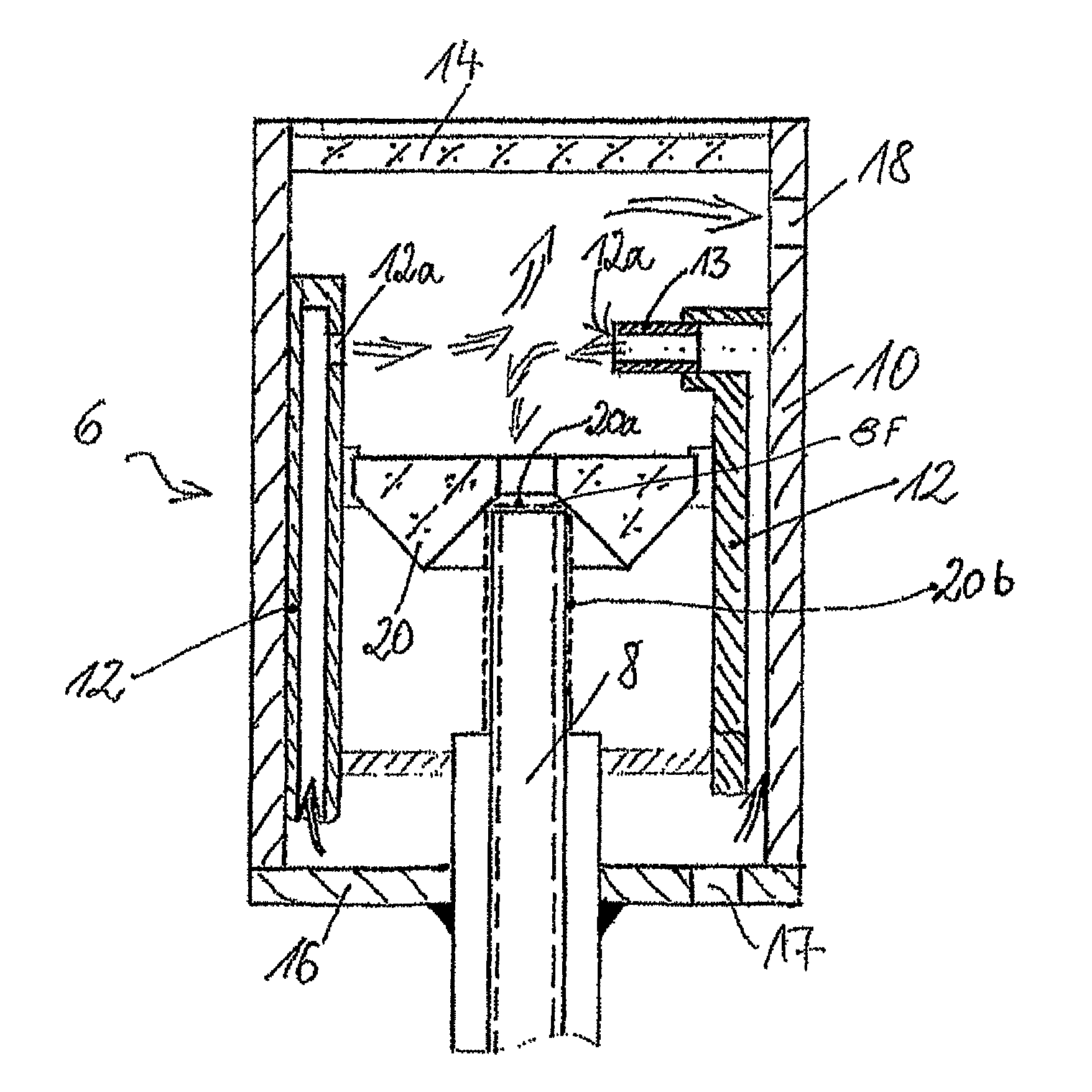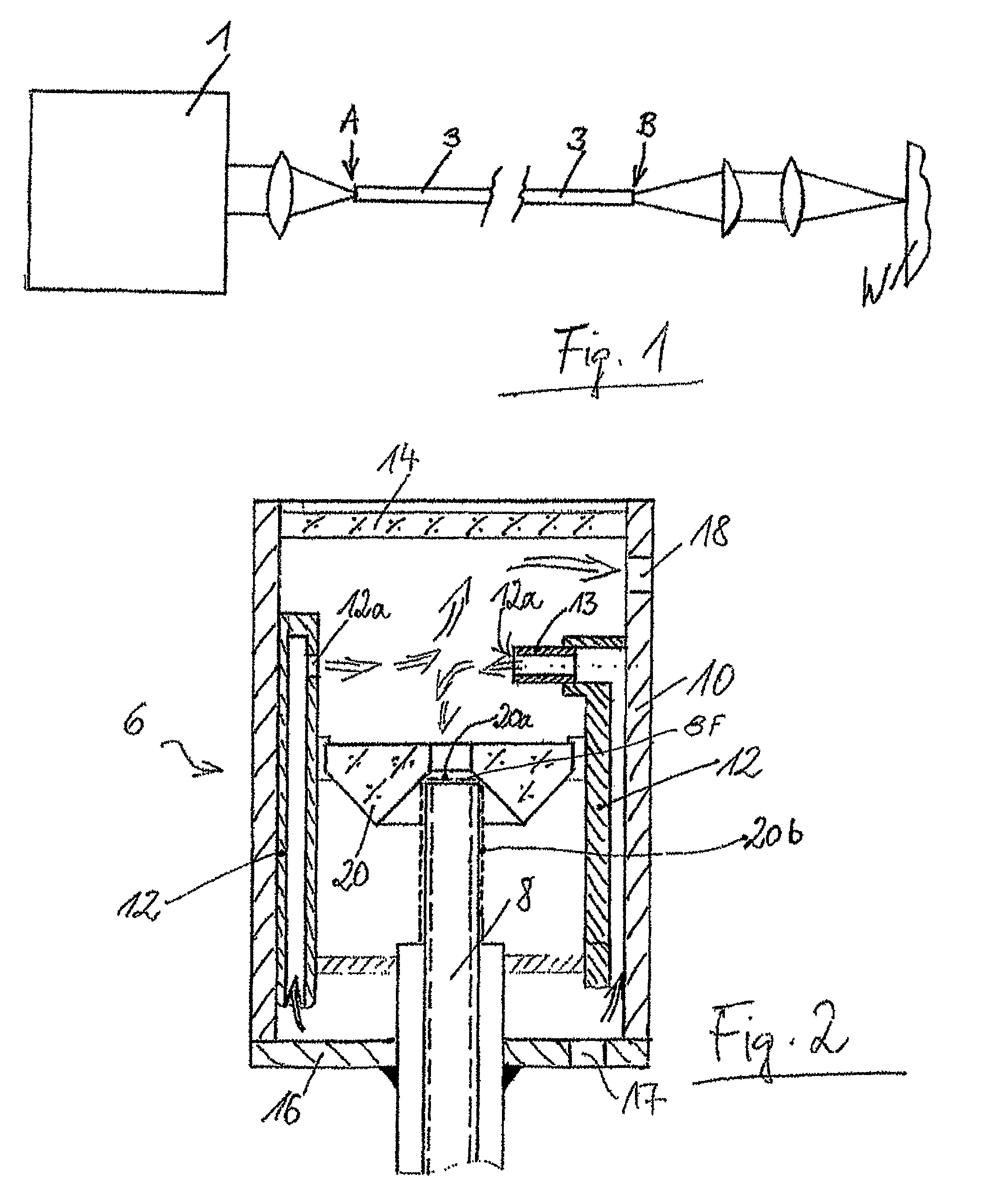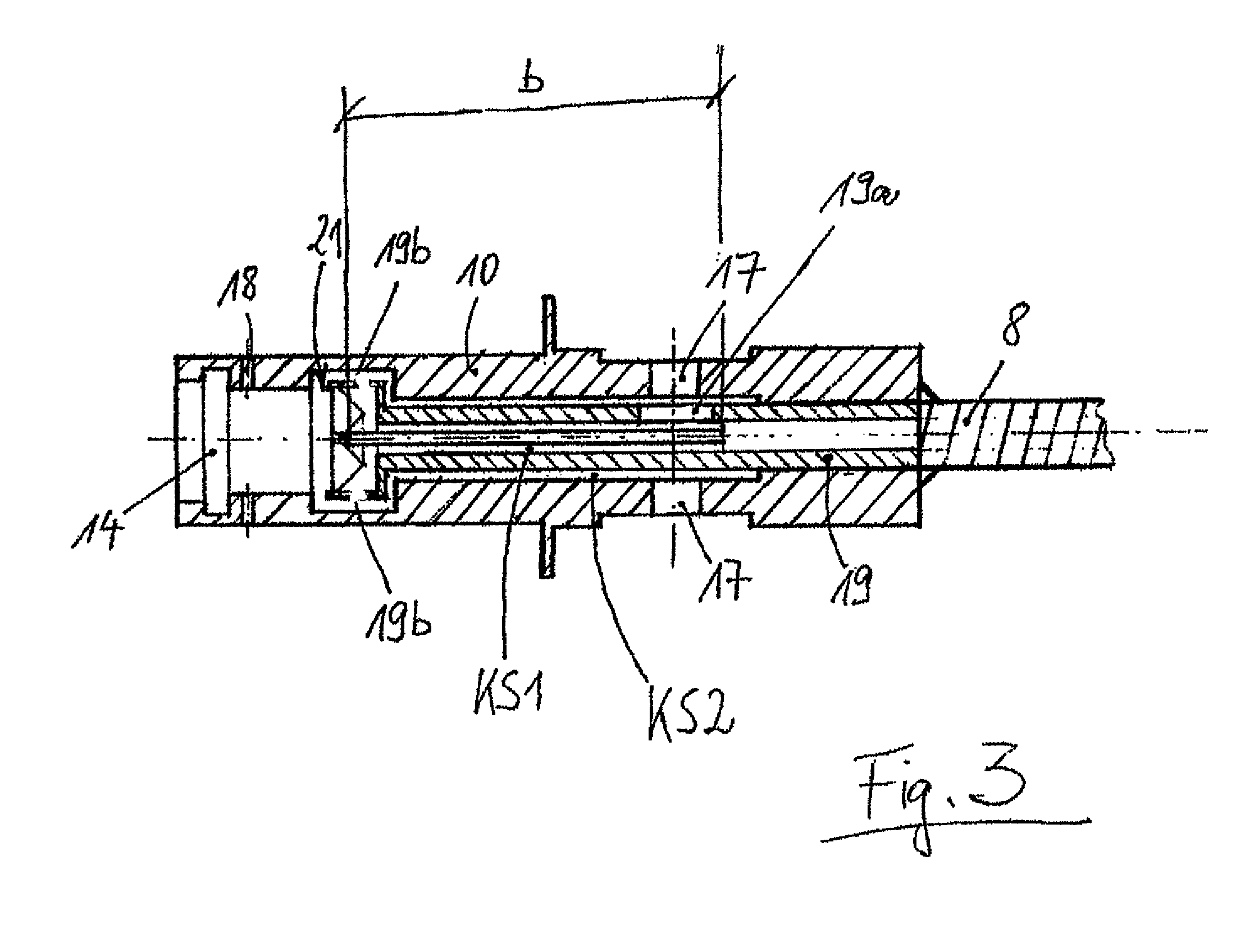Air-cooled plug part for an optical waveguide
a technology of air cooling and optical waveguides, which is applied in the direction of optics, optical light guides, instruments, etc., can solve the problems of maintaining leakage tightness and vapor bubbles, and achieve the effect of reducing the operating temperature range of the involved optics and small air heat capacity
- Summary
- Abstract
- Description
- Claims
- Application Information
AI Technical Summary
Benefits of technology
Problems solved by technology
Method used
Image
Examples
Embodiment Construction
[0012]FIG. 1 shows in a greatly schematized form an exemplary transmission path is for a laser beam. A laser source 1 is schematically shown on the left side of FIG. 1; such source may be a YAG laser, for example, generating laser radiation in the range up to 6 kW and more. This radiation is guided via a focusing lens to an optical waveguide 3 in order to be coupled into the latter at an area designated with A. The optical waveguide has the function to guide the laser beam to a processing station along routes which often may have considerable lengths of up to 80 m; at the processing station the beam will be used for cutting, welding, marking, ablating, perforating etc. At an area B the laser beam exits the optical waveguide, runs through a collimation lens, a second focusing lens and finally arrives at the work piece W which is to be processed.
[0013]At the areas designated with A and B the plug part of the invention may be employed, although it is possible here for functional reason...
PUM
 Login to View More
Login to View More Abstract
Description
Claims
Application Information
 Login to View More
Login to View More - R&D
- Intellectual Property
- Life Sciences
- Materials
- Tech Scout
- Unparalleled Data Quality
- Higher Quality Content
- 60% Fewer Hallucinations
Browse by: Latest US Patents, China's latest patents, Technical Efficacy Thesaurus, Application Domain, Technology Topic, Popular Technical Reports.
© 2025 PatSnap. All rights reserved.Legal|Privacy policy|Modern Slavery Act Transparency Statement|Sitemap|About US| Contact US: help@patsnap.com



